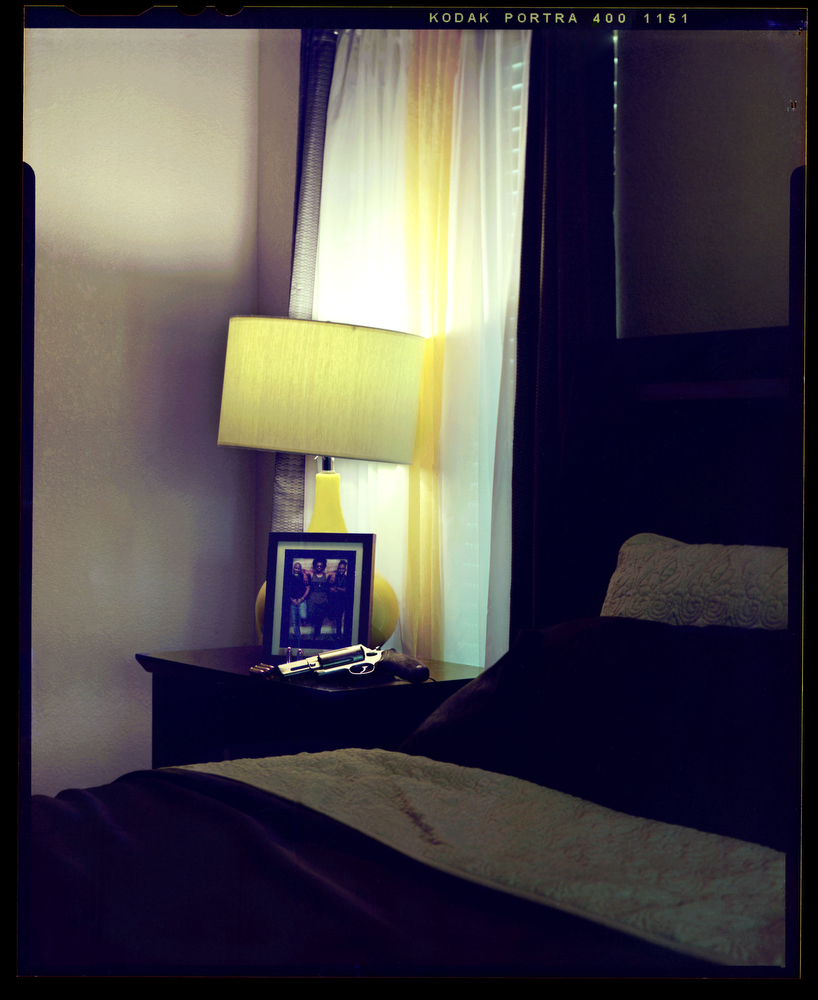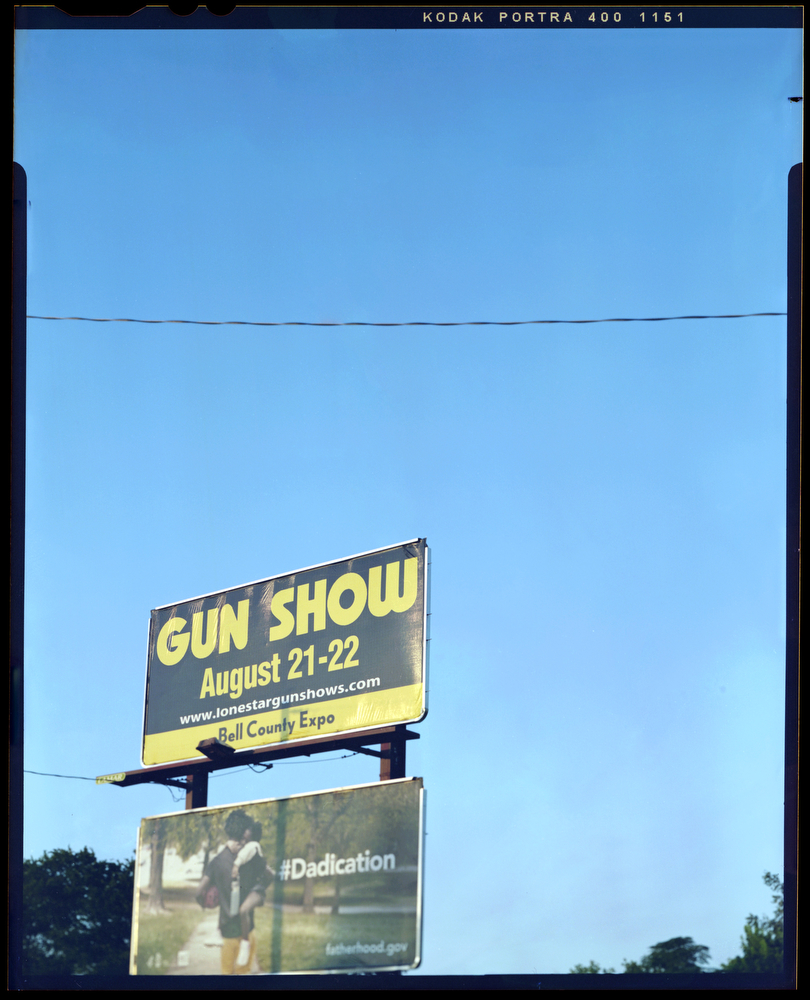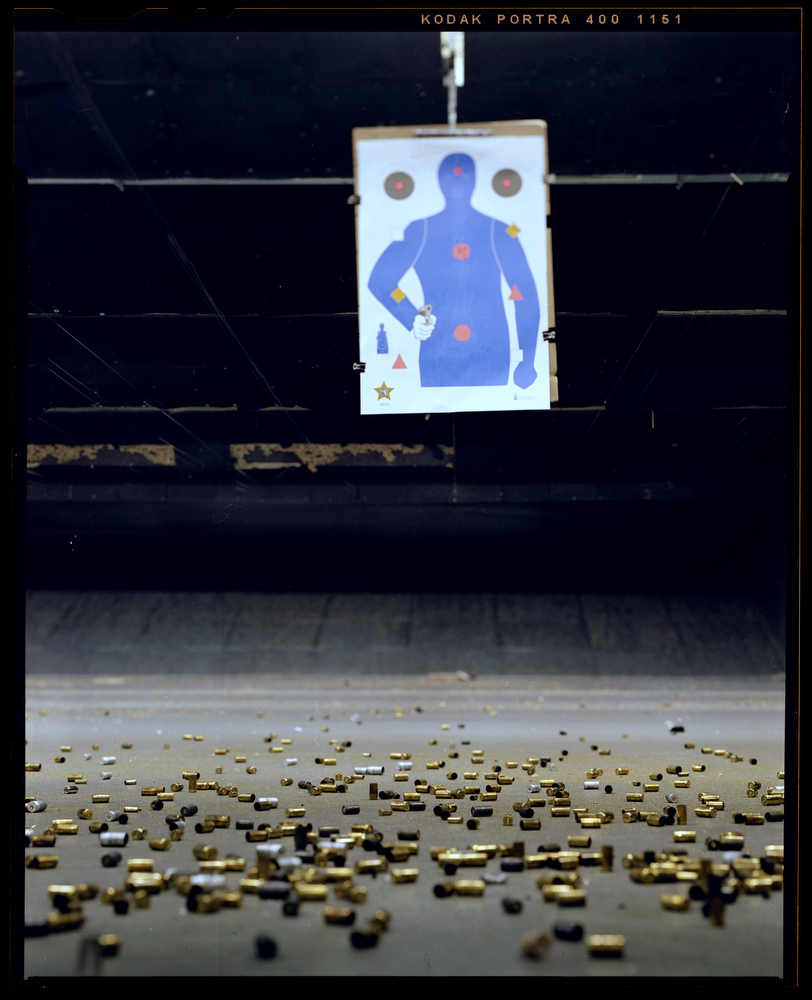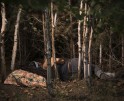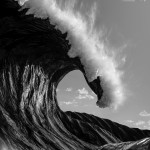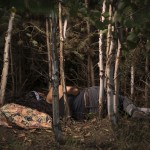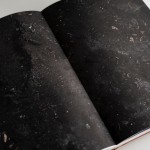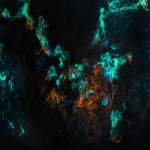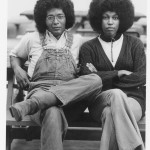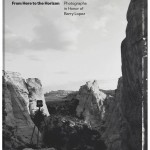Remaining True to Your Artistic Voice, Trusting the Process and Choosing Environments Where Your Voice Will Flourish: Alayna N. Pernell in Conversation with Christian K. Lee
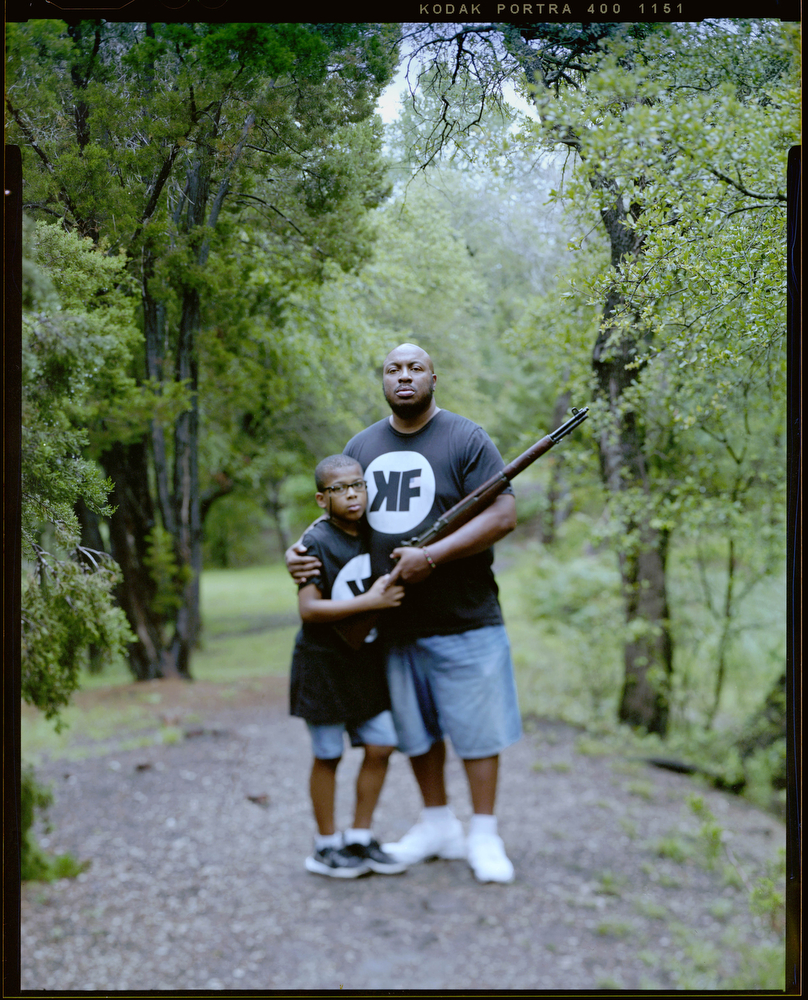
©Christian K. Lee, Aaron Banks, 38, and his son Aaron Banks Jr., 08, embrace at a local park on Saturday, May 22, 2021 in Cedar Park, Tx. “The image of the average gun enthusiast needs an update,” Mr Banks said. He is the President of Keep Firing LLC where he has made his son the CEO. Currently he is one of 24 Pistol Instructors certified by the National African American Gun Association.
Over the last few years, I have had the greatest pleasure of meeting some of the most talented and profound Black photographers across the nation. As a Black woman photographer and writer myself, it is always heartwarming and inspiring to see artists who look like me doing great things in their own individual ways. In honor of Black History Month, I’m sharing space in this piece with one of those artists who have inspired me. He is someone who I respect greatly for his contributions as an artist and simply for being an all-around phenomenal human being– Christian K. Lee.
Christian K. Lee is a lens-based artist from Chicago, IL where he currently resides. He has been honored by the Sony World Photography Awards, Critical Mass Top 50, Arnold Newman Prize, Royal Photographic Society, and Head On Photo Festival to name a few. His work has also been commissioned and or licensed by publications including Rolling Stone, The Washington Post, The Guardian, NPR, and National Geographic.
His background drives his desire to utilize Art as an investigative tool. He believes that it can foster understanding where words fail, and his goal is to create Art with the purpose of reflecting the world in which he currently lives.
In this conversation, we discuss Chris’s journey as an artist, how he remains true to his voice, and more followed by key advice he shares for Black artists.
Follow Christian K. Lee on Instagram: @chrisklee_jpg
ANP: I want to first say thank you for allowing me to have a conversation with you. It’s very special to me and I’m truly grateful. We have known each other for at least a couple of years now, (which is wild to me because it feels like it has been so much longer than that) and have had several conversations about your work, and just being photographers in general. As an initial inquiry, I’m curious if you can tell me a little bit about the moment that you knew it was your purpose to be a photographer and what drove you to create the work that you are creating today.
CKL: Hi Alayna. I appreciate the kind words. It has been a pleasure. I began to take photography seriously in August 2014 during the Ferguson Unrest. It was a time when my community and the world witnessed the unarmed shooting death of Michael Brown by a police officer. Before it became national or international news, I was there, and I remember feeling like this needed to be documented. After that, I saw an influx of photographers into the community from press organizations. I remember feeling bothered that people from outside of my community had more of a right to tell my story on a national scale than the people residing in the community. I set out to do something about that. That thought fueled my photo making process for several years. Recently, I was in the Army until June 2022. During my service, there were things we were instructed not to talk about in the face of more killings of people by law enforcement, because it would be a conflict of interest. My burning desire to create was reignited and I allowed my art to talk when I knew I could not use my words.
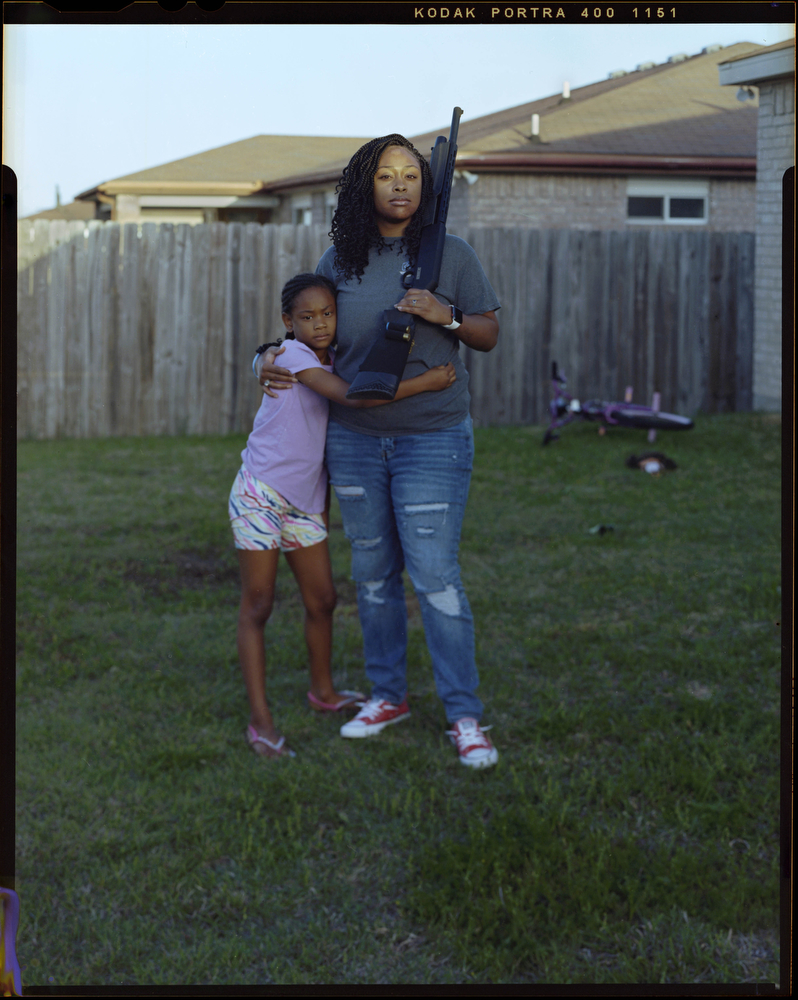
©Christian K. Lee, Damillah Lane, 26, is embraced by her daughtyer Skylar Lane, 8, as she holds her firearm outside of her home on Saturday, April 10, 2021 in Killeen, Tx. “Whenever my husband leaves I feel a need to protect my family,” Damillah said.
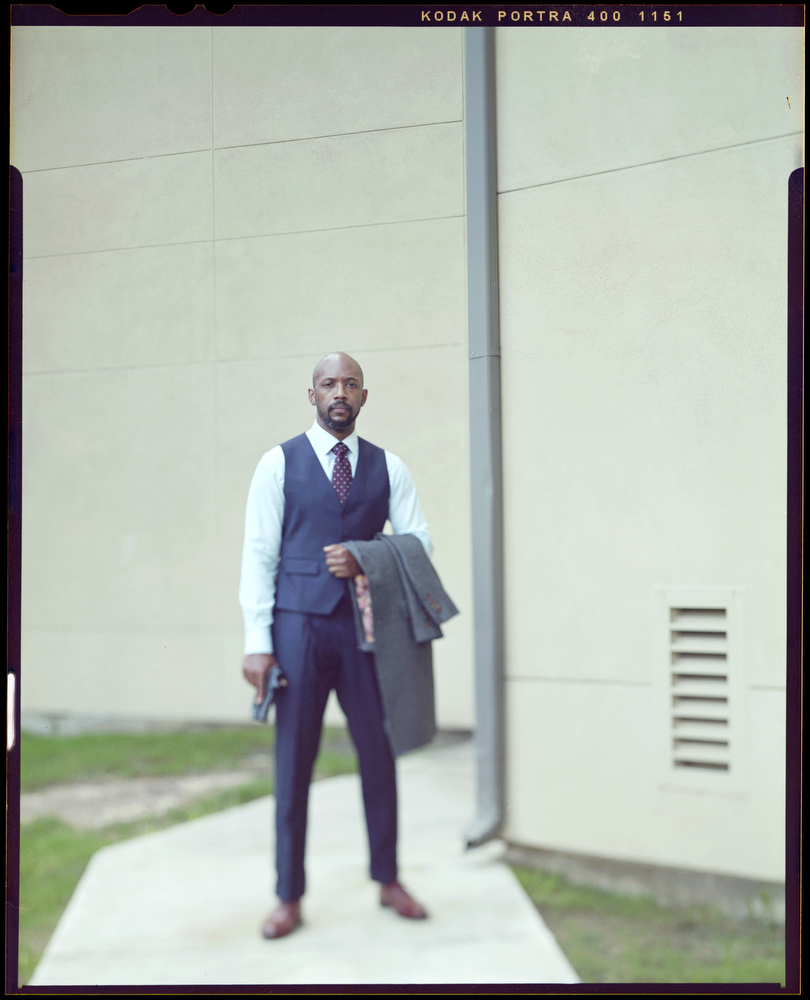
©Christian K. Lee, Brandon Antone, 37, stands outside of his apartment complex holding his firearm on Wednesday, May 26, 2021. Antone started a Facebook group with nearly 2,000 members in the Austin area with the goal of creating a safe space for African Americans to talk about firearms. “I noticed when I go to the range it wasn’t a lot of us there so I wanted to create a place we could talk about guns,” he said.
ANP: I sadly remember that time like it was yesterday and it has not been a moment of rest since then, and even before then. These pivotal points are always so important to document, but going off of what you said about who had more agency to tell the story… perspective definitely matters. I guess in simpler words, what’s being documented matters, but who is doing the documenting matters, too.
Thank you for your service as well. I had no idea that you were unable to use your own voice while in the service. How has that transition been for you as an artist? Are there other photographers or artists in general that you look to for inspiration as you have been in this recent transition?
CKL: That’s a great question. I believe as a documentarian I was tied to a set of ethics that did not sit right with me morally. For example we are taught to be objective when creating work. I believe this is impossible and I refuse to act like I can do it. The title, Artist, best fits me because I have freed myself to have a voice, where in the past I could not. I was just a vessel to create pretty images. Now the projects that I embark on all start from a place of caring and love, that has changed the results for the better. I am inspired by James Van Der Zee, Mary Ellen Mark, Gordon Parks and contemporary artists focusing on their experiences and communities.
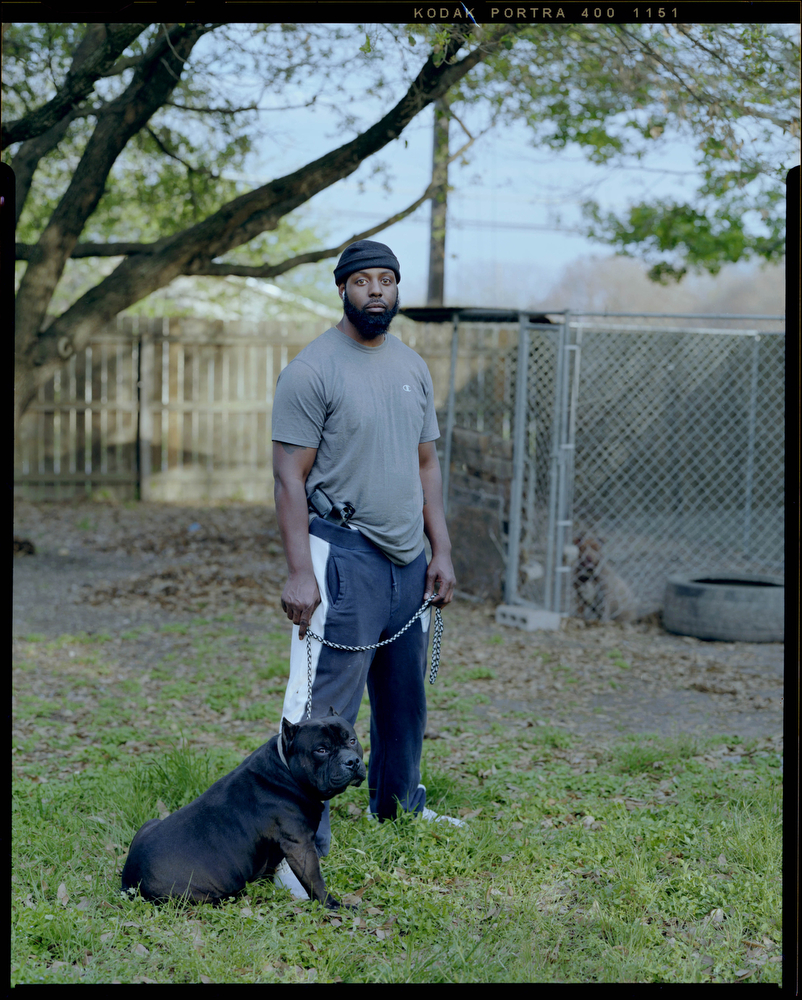
©Chrstian K. Lee, Marvin West, 39, holds his dog outside of his home with his firearm positioned on his hip on Monday, April 06, 2021 in Killeen, Tx. “It’s more to the picture than what you see,” West said. People often judge him based on his appearance. He mentions that those people would be surprised to know that he’s an educated business owner that holds a Masters degree.
ANP: That’s so intriguing. I definitely feel like I understand where you’re coming from as far as morality and how objectivity is impossible, especially when it’s concerning something that you are very passionate about. I’m also very inspired by those artists as well.
I’m curious to know about your creative process. How do you approach creating new bodies of work and what is your creative process? How do you know when it’s a certain project that you need to work on at a certain moment in time?
CKL: I’m always having a conversation with the 9 year old version of me, asking him what he would work on if he had the resources, audience and skillset. Through those conversations I know whatever path I chose to create I know that I’m doing it because it matters and not because of financial gain or clout. Once I have that conversation I find that I have a closet full of work to get started on, but it’s up to me to determine how I will do it.
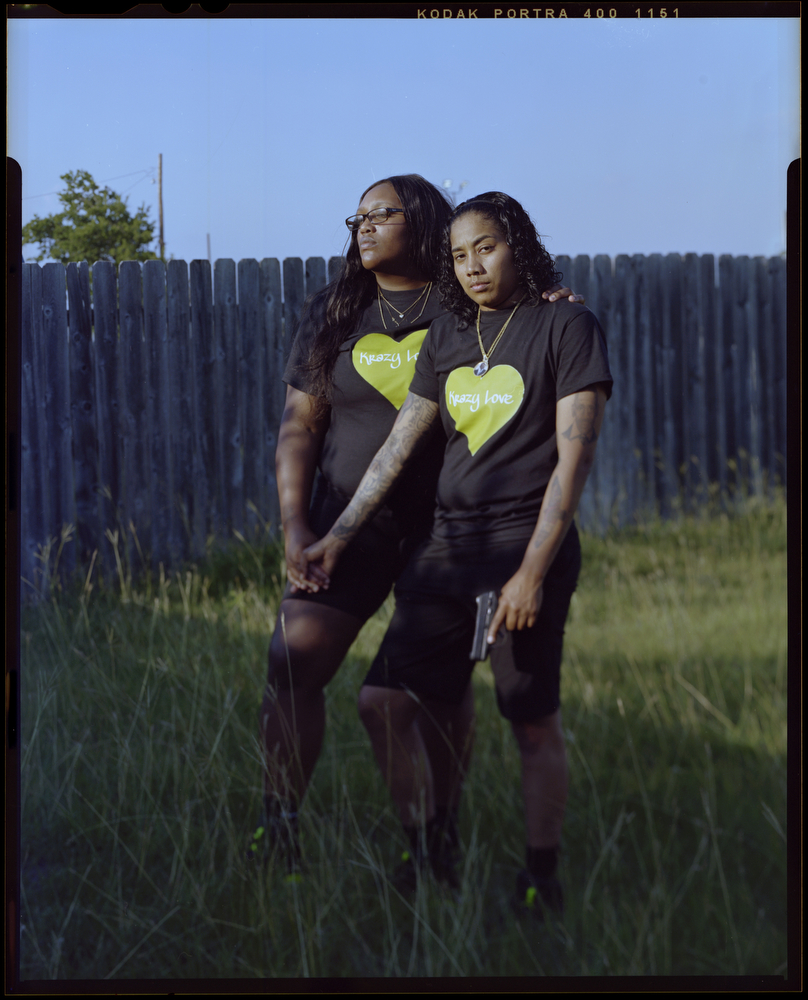
©Christian K. Lee, Alisa Coleman, 25, background, embraces Sharise Campbell, 26, after their date at a local gun range. “I’ve seen people get shot so I don’t like guns however we understand it’s for protection,” Coleman said. Although Coleman and Campbell are a couple their view of guns are different however they both agree that is necessary to protect their family. “I got to protect my family at all cost,” Campbell said.
ANP: Yeah, that makes sense. I often find myself, when talking to people whether it’s about artwork or anything else, thinking about how important it is to keep that image of your younger self in your head. For most people, it can be hard to not be hard on yourself as an adult; but keeping that image of your younger self in mind as someone to be kind to is important. I definitely see what you’re saying and can 100% relate to that.
You’re currently working on a profoundly moving body of work that you have been working on for quite some time titled Armed Doesn’t Mean Dangerous. I know that people are able to read your artist statement about the work, which is amazing. Though I was wondering if you could talk more about how this work came to be and what you have learned personally from working on this project.
CKL: I noticed that there were more protests happening and I didn’t feel as motivated to cover them because I was mentally drained from Ferguson. I felt drained seeing black people die. I felt like the images that we see a lot of times that come from these protests really only show our anger and don’t get at the underlying issues that’s causing these problems in the first place. I wanted to really start creating work that got to some of the underlying issues affecting our communities and what happened was interesting.
I was living in Texas and I’m from Chicago, so I was really comparing the two places a lot. Then I realized, I never saw a black person depicted positively around a gun until I moved to Texas. At first, I didn’t even have something I was trying to say or something I was trying to prove. It was like, I know that I’ve never seen this, and I know that responsible owners exist in Chicago; and I wanted to go create those images. I realized that it was larger than Chicago. I had never seen responsible African American owners anywhere, so I wanted to go create those images that I wasn’t seeing and that was the origin of the project. Since then, I started doing my own research work, studying law, studying the constitution, and started reading books. I realized that there’s a lot more undertones for why this exists.
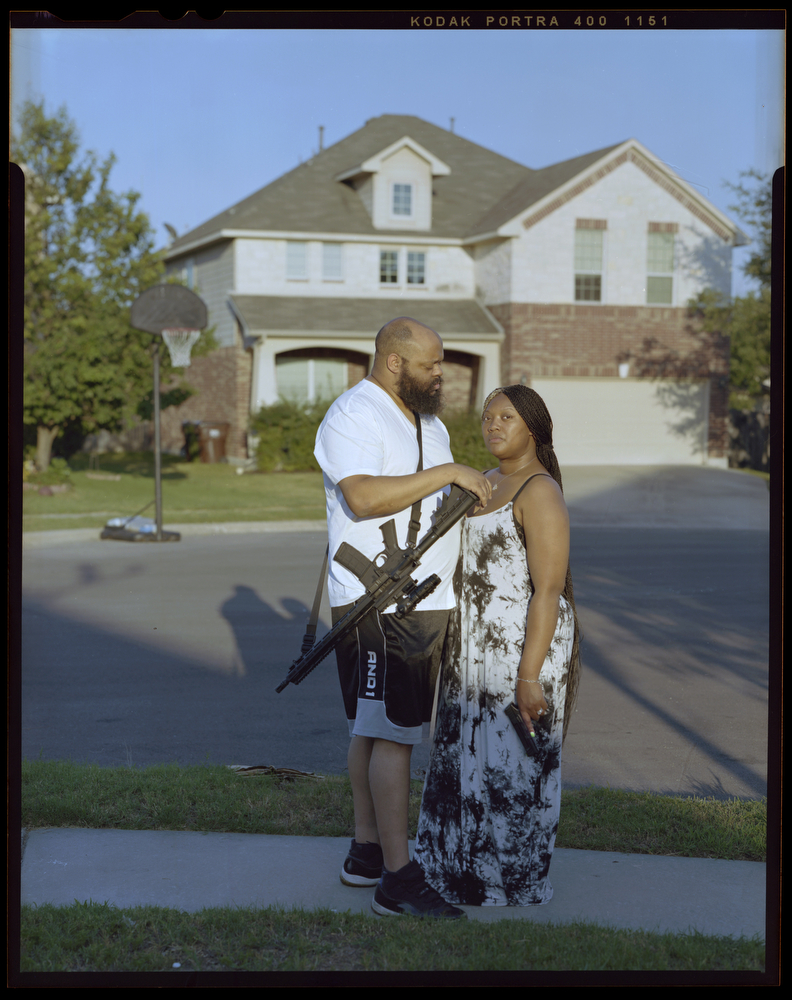
©Christian K. Lee, Justin Barlow, 34, left, gazes at wife Cha’von Barlow, 33, outside of their home on Saturday, June 18, 2021 in Round Rock, Tx. “I never want my family to feel powerless,” Justin said. He was introduced to guns at the age 14 through hunting. Later he introduced his wife to guns. “In my absence my wife and children will be safe,” he said.
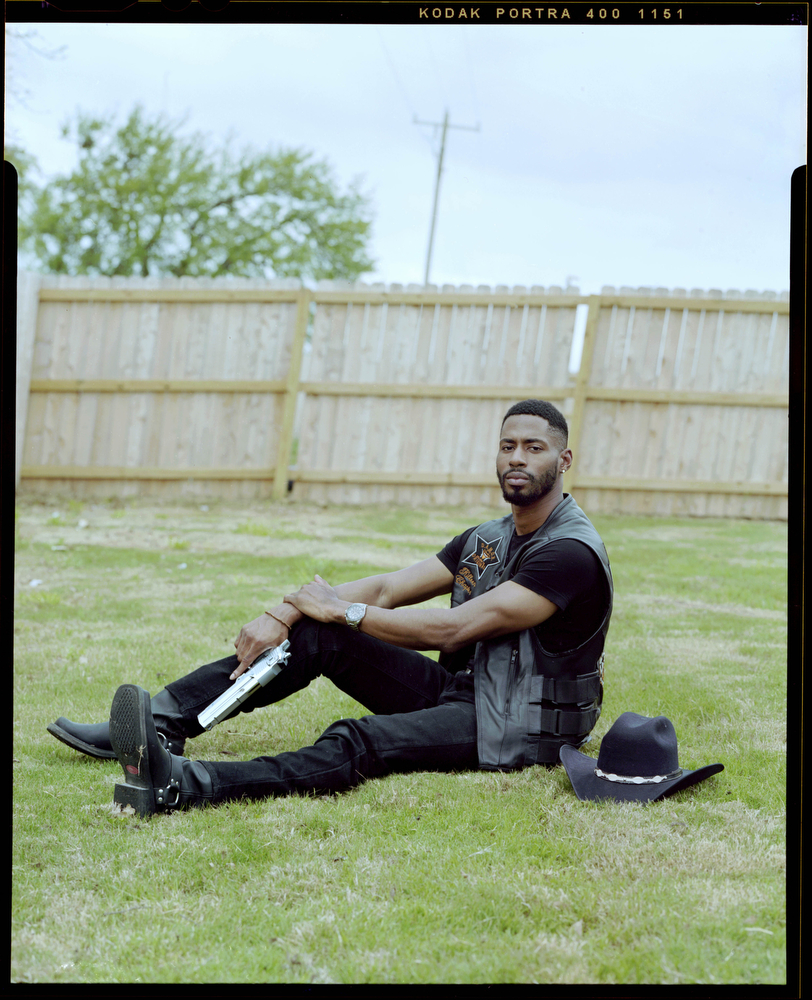
©Christian K. Lee, Devin Meadows, 29, holds his firearm outside of his home on Tuesday, April 06, 2021 in Copperas Cove, Tx. “We as Africans Americans have been deprived of so many rights so why not take advantage of the ones we have,” Meadows said.
ANP: What you just said reminds me of how oftentimes, especially with black people, the anger is judged, but the reason behind it is not always explored, justified, or listened to and is often ignored. I feel your work definitely speaks to that on two sides. On one hand, maybe it makes some people uncomfortable, which is fine because some people need to be made uncomfortable to really address some of those things. Then on the other hand, I feel like it’s a bit of a relief to see black people positively depicted with guns. It’s such a point of contention, especially in America…
CKL: Yeah 100%. Man… Alayna, it’s so much deeper, but I’m going to try not to go into an artist talk and just stay on par with the interview. I haven’t really talked about what I’ve learned personally. At first, I just wanted to expand the archives, but after working on it and after conducting research, I began to realize that this is not just a gun issue problem. The things that I found that apply here, it is almost applicable in every area of American life that African Americans receive injustices on. I think that’s one of the things that I learned.
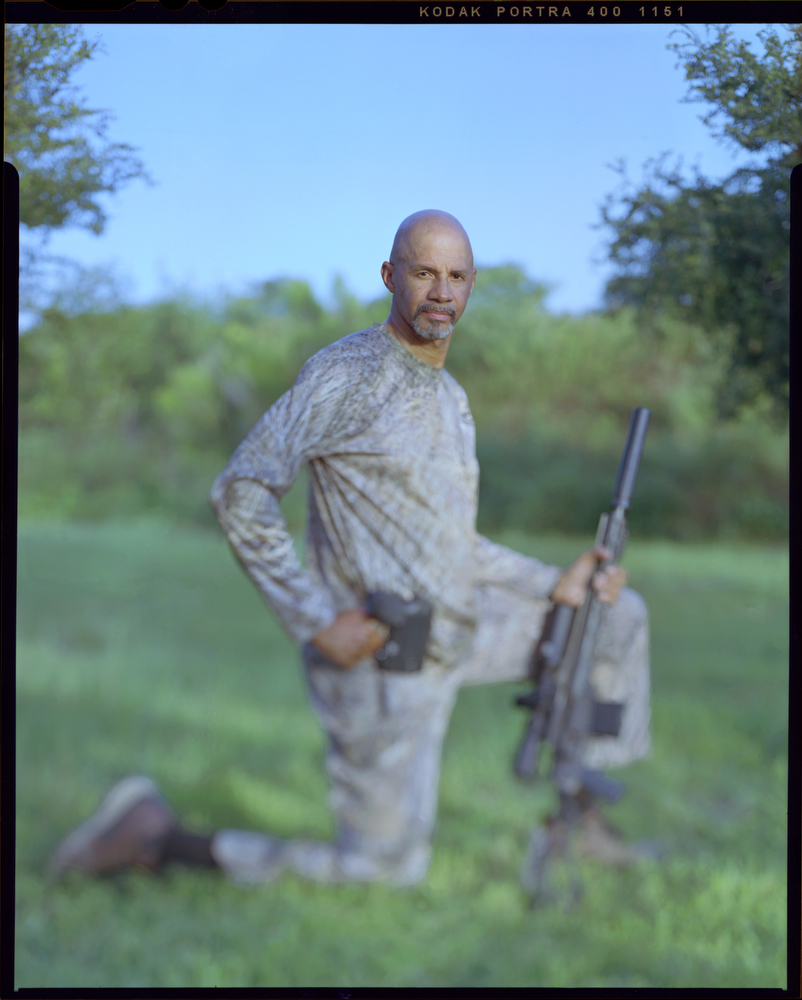
©Christian K. Lee, “A year lease can be upwards of $1100 and you may only walk away with one deer that year,” Butler said. “I believe a lot of people would love to hunt if they had the opportunity,” he said.

©Christian K. Lee, Lindberg Wilborn, 32, stands holding the target he used to qualify for his license to carry outside a local gun range on Saturday, March 27, 2021 in Killeen, TX. He has owned his firearm for about 3 months. “Society looks at black men as predators and scary people so most of us are scared to own a firearm in fear of fueling the fear that already exists,” Wilborn said.
ANP: That’s so true. So, for this next question, since it is Black History Month, I’m being very specific with this question not to intentionally cancel anyone out or exclude anyone, but to make sure that I’m honoring this month and especially black artists. So, what advice would you give to other aspiring Black artists who are either navigating through the industry or want to become an artist?
CKL: I think that’s a good question. The advice that I would give is to go to places where you feel like your creativity and voice will flourish as a creative. To use an example, “If you sit in your bedroom and print out an 8×10 inch image” and put it on your wall, that image might look so big. Then you take it and put it on the gallery wall; once the environment changes, it does not suit that piece of art in that same way.”
I’m using this as a metaphor to say, your voice can also be altered by the environment if you allow it. So you have to go to places where you’re welcome. You have to go to a place where your voice, not just your art, is welcome and can flourish. I think a lot of times people do the opposite. They change their art to fit the environment where they should instead be choosing their environments to fit their voice. I think that would be the biggest thing because I think coming from a diverse background you have a lot to offer and have a lot to say. If you have something to say and you’re passionate about what you want to say, get it out unfiltered. Create it the way that you envisioned it. I believe any creative would create their best work that way. I believe a lot of times we start making self-critiques because we know the environment in which our art will sit in and I just think you need to get it out raw the way that you created it. I think that would be your best work.
ANP: That’s why it’s so important to be a believer in yourself and trust that what you’re making is important. You said so many great things that I really hope black artists will really keep in mind. Especially in a world, I don’t even want to just say art in general, but a world where your voice is often not heard or often dismissed and being put in spaces (a lot of times) where you’re having to shape shift a little bit so that people are more comfortable around you. So, adding onto that, for sure, is very important.
CKL: I think you articulated it very well.
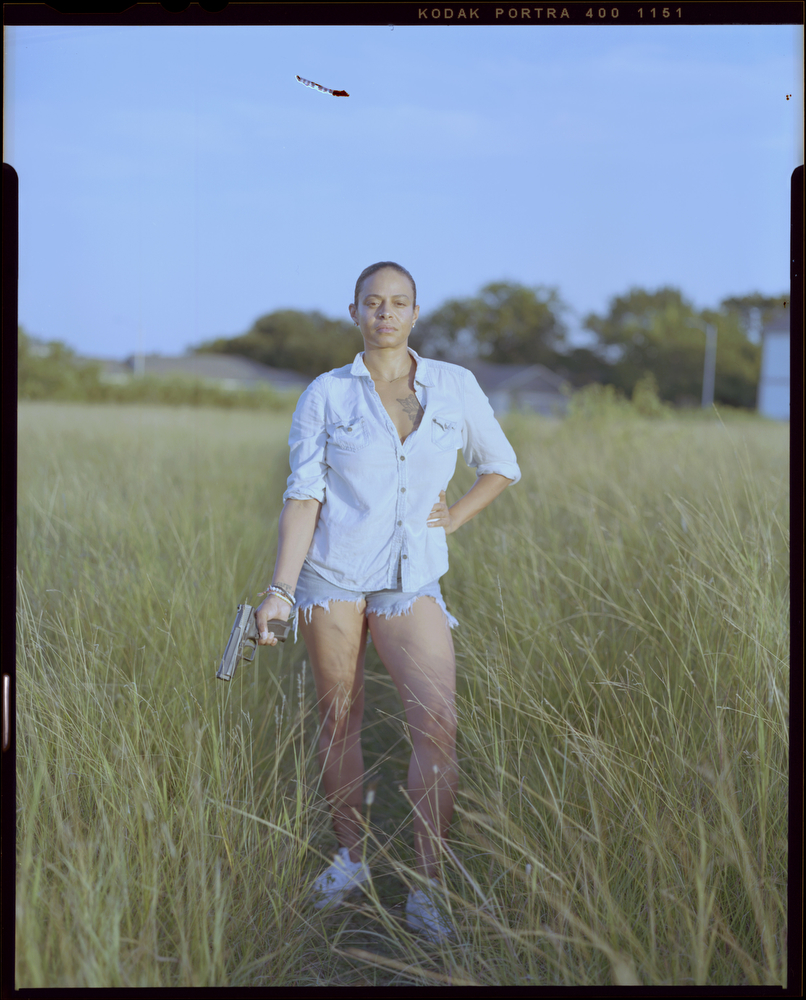
©Christian K. Lee, Leta Harrison, 39, postures her firearm on Sunday, July 25, 2021 in Pflugerville, Tx. Harrison began training with her firearm after experiencing a Domestic Violent incident. “I never want to be that scared of anyone ever again,” she said. She explains that she does not want to be viewed as a victim therefore she is proactive with exercising her 2nd Amendment rights.

©Christian K. Lee, Jamyce Brown, 29, right, embraces her husband Keon Brown, 27, outside of their home on Sunday, April 18, 2021 in Killeen, Tx. “In my hometown introducing a child to a gun may be potentially setting them up for failure,” Chicago native Jamyce said.
ANP: So, as we wrap up, this one’s more of a personal question. What are things that are on your radar at the moment that you are able to share?
CKL: My goal is to continue to expand my series Armed Doesn’t Mean Dangerous, and I really want to expand my project Chicago Steppin. That’s really my goal.
ANP: That’s perfect and sounds wonderful. Thank you so much, Chris.
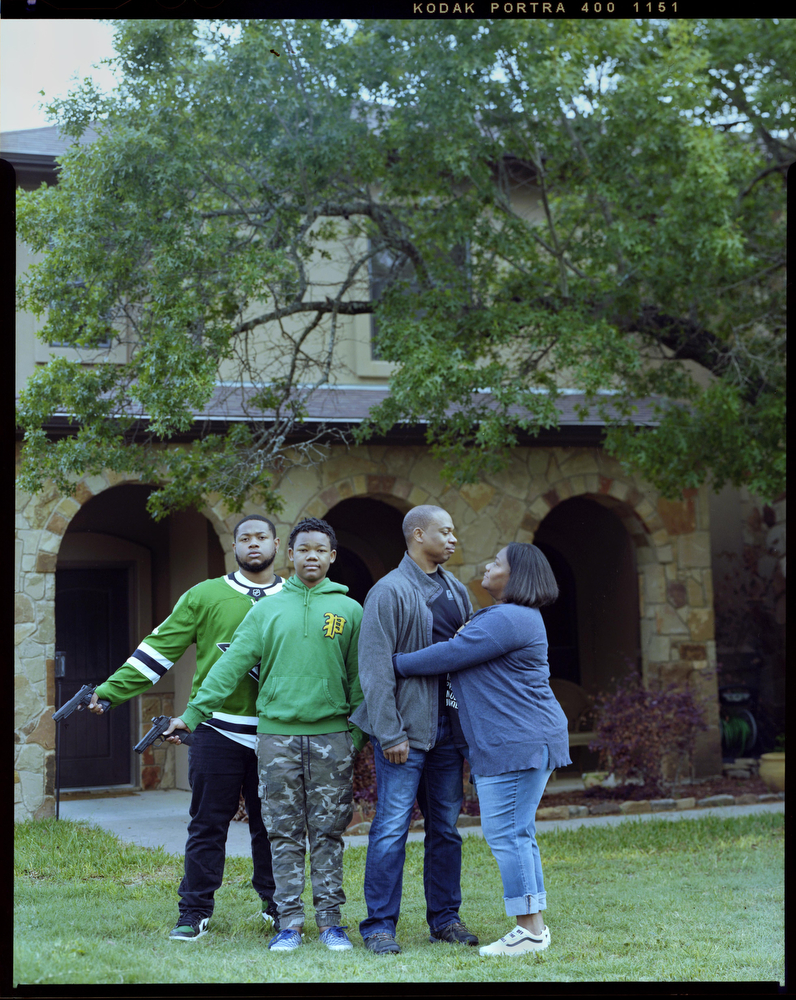
©Christian K. Lee, Brothers Dorian Black, 20, from left, and Ashton Black, 13, postures their firearm as Datrelle Black, 46, is embraced by his wife Rohonda Black, 44, outside of their home on Sunday, April 18, 2021 in Killeen, Tx. “For my children I take the curiosity out of it, total avoidance of guns teaches fear we should inform our children of gun safety,” Datrelle said.
Alayna N. Pernell (b. 1996) is a visual artist, writer, and educator from Heflin, Alabama. Her practice considers the gravity of the mental well-being of Black people in relation to the spaces they inhabit, whether physically or metaphorically. Throughout her research and making, using a compilation of photography, text, and found materials, she unearths and examines the harsh realities and complexities of being a Black American woman.
In May 2019, she graduated from The University of Alabama where she received her Bachelor of Arts in Studio Art with a concentration in Photography and a minor in African American Studies. She received her MFA in Photography from the School of the Art Institute of Chicago in May 2021. Her work has been exhibited in various cities across the United States, including FLXST Contemporary (Chicago, IL), Refraction Gallery (Milwaukee, WI), JKC Gallery (Trenton, NJ), RUSCHWOMAN Gallery (Chicago, IL), Colorado Photographic Arts Center (Denver, CO), Griffin Museum of Photography (Winchester, MA) and more. Pernell was named a 2023 Mary L. Nohl Fellow; in 2020-2021 she was the recipient of the James Weinstein Memorial Award by the School of the Art Institute of Chicago Department of Photography and the 2021 Snider Prize award recipient by the Museum of Contemporary Photography. She was also recognized on the Silver Eye Center of Photography 2022 Silver List, Photolucida’s 2021 Critical Mass Top 50, 2021 Lenscratch Student Prize Honorable Mention, and more.
She is currently the Associate Lecture of Photography and Imaging at the University of Wisconsin-Milwaukee.
Follow Alayna Pernell on Instagram: @alaynapernell
Posts on Lenscratch may not be reproduced without the permission of the Lenscratch staff and the photographer.
Recommended
-
Earth Week: Hugh Kretschmer: Plastic “Waves”April 24th, 2024
-
Earth Week: Richard Lloyd Lewis: Abiogenesis, My Home, Our HomeApril 23rd, 2024
-
Earth Month Photographers on Photographers: Jason Lindsey in Conversation with Areca RoeApril 21st, 2024
-
Earth Month Photographers on Photographers: J Wren Supak in Conversation with Ryan ParkerApril 20th, 2024
-
Earth Month Photographers on Photographers: Josh Hobson in Conversation with Kes EfstathiouApril 19th, 2024

